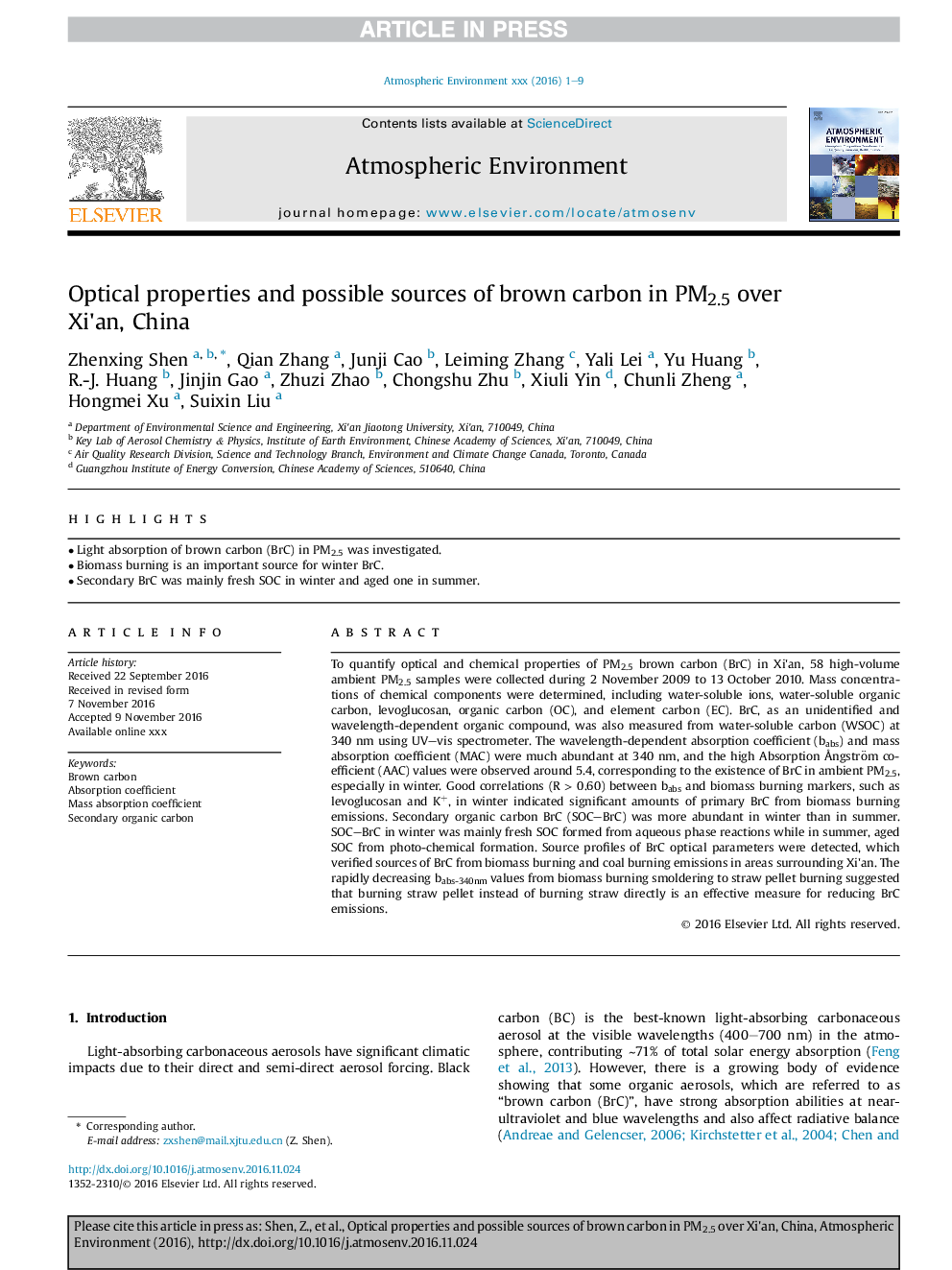| Article ID | Journal | Published Year | Pages | File Type |
|---|---|---|---|---|
| 5753467 | Atmospheric Environment | 2017 | 9 Pages |
Abstract
To quantify optical and chemical properties of PM2.5 brown carbon (BrC) in Xi'an, 58 high-volume ambient PM2.5 samples were collected during 2 November 2009 to 13 October 2010. Mass concentrations of chemical components were determined, including water-soluble ions, water-soluble organic carbon, levoglucosan, organic carbon (OC), and element carbon (EC). BrC, as an unidentified and wavelength-dependent organic compound, was also measured from water-soluble carbon (WSOC) at 340Â nm using UV-vis spectrometer. The wavelength-dependent absorption coefficient (babs) and mass absorption coefficient (MAC) were much abundant at 340Â nm, and the high Absorption Ã
ngström coefficient (AAC) values were observed around 5.4, corresponding to the existence of BrC in ambient PM2.5, especially in winter. Good correlations (RÂ >Â 0.60) between babs and biomass burning markers, such as levoglucosan and K+, in winter indicated significant amounts of primary BrC from biomass burning emissions. Secondary organic carbon BrC (SOCBrC) was more abundant in winter than in summer. SOCBrC in winter was mainly fresh SOC formed from aqueous phase reactions while in summer, aged SOC from photo-chemical formation. Source profiles of BrC optical parameters were detected, which verified sources of BrC from biomass burning and coal burning emissions in areas surrounding Xi'an. The rapidly decreasing babs-340nm values from biomass burning smoldering to straw pellet burning suggested that burning straw pellet instead of burning straw directly is an effective measure for reducing BrC emissions.
Related Topics
Physical Sciences and Engineering
Earth and Planetary Sciences
Atmospheric Science
Authors
Zhenxing Shen, Qian Zhang, Junji Cao, Leiming Zhang, Yali Lei, Yu Huang, R.-J. Huang, Jinjin Gao, Zhuzi Zhao, Chongshu Zhu, Xiuli Yin, Chunli Zheng, Hongmei Xu, Suixin Liu,
